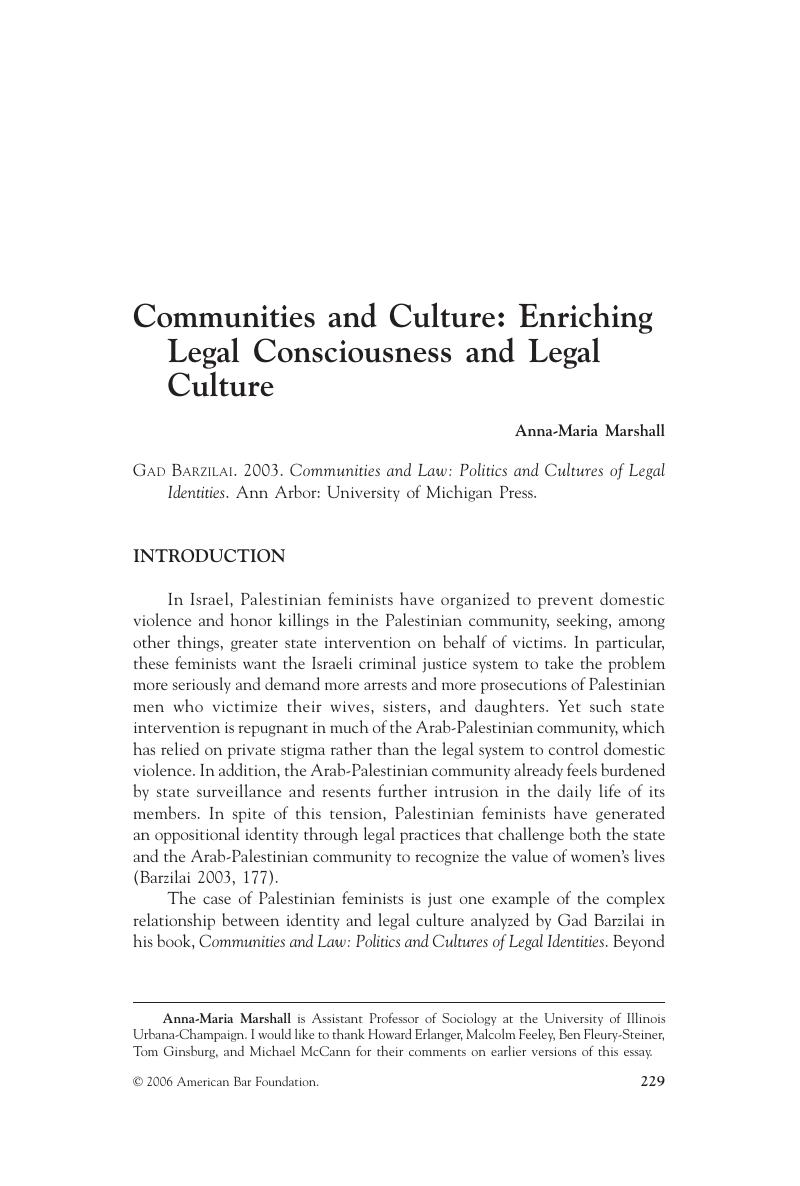Crossref Citations
This article has been cited by the following publications. This list is generated based on data provided by Crossref.
Shinohara, Chika
2009.
Perceiving Gender Locally, Globally, and Intersectionally.
Vol. 13,
Issue. ,
p.
267.
Dagan, Tsilly
and
Fisher, Talia
2011.
The State and the Market - A Parable: On the State's Commodifying Effects.
SSRN Electronic Journal,
Myrick, Amy
2013.
Facing Your Criminal Record: Expungement and the Collateral Problem of Wrongfully Represented Self.
Law & Society Review,
Vol. 47,
Issue. 1,
p.
73.
Kojder, Andrzej
and
Cywiński, Zbigniew
2014.
Socjologia prawa. Główne problemy i postacie.
Graca, Sofia
2018.
Portuguese culture and legal consciousness: a discussion of immigrant women's perceptions of and reactions to domestic violence.
International Journal of Law in Context,
Vol. 14,
Issue. 3,
p.
416.
Liu, Lin
2020.
The conditions for progressive rights to bring about social change.
Contemporary Justice Review,
Vol. 23,
Issue. 3,
p.
222.
Pilitowski, Bartosz
2024.
Typologia przeszkód w realizacji prawa do sądu. Zastosowanie socjologicznej koncepcji praw człowieka Adama Podgóreckiego.
Zeszyty Naukowe Katolickiego Uniwersytetu Lubelskiego Jana Pawła II,
Vol. 67,
Issue. 3,
Graca, Sofia
and
Kapageorgiadou, Violeta
2025.
“(…) here I have freedom”—A study of refugees' and asylum seekers' legal consciousness in Greece: Self‐identity, human rights, and expectations from European Union law.
Law & Policy,
Vol. 47,
Issue. 1,



